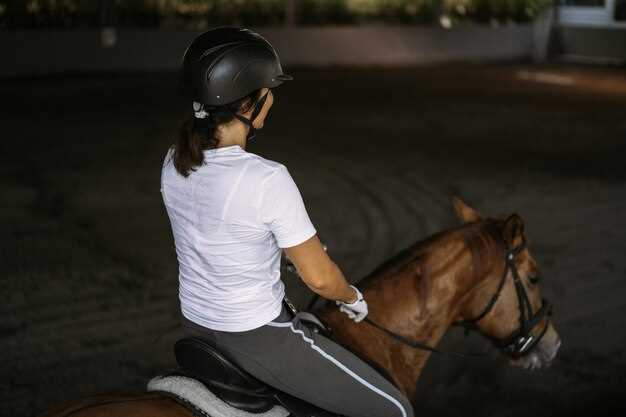
Improving your riding skills can often feel like a daunting task, but with the right strategies, it can become an exciting journey. Whether you’re a beginner looking to build confidence or an experienced rider aiming to refine your technique, actionable tips can make all the difference. This article presents essential strategies that can help you quickly elevate your riding abilities, regardless of your starting point.
One of the first steps to efficient learning is identifying your specific goals. Do you want to master speed, agility, or control? By defining your objectives, you can tailor your practice sessions to focus on the areas that require the most attention. Setting measurable goals also allows you to track your progress, which can be incredibly motivating as you see tangible results over time.
Incorporating regular practice into your routine is crucial for rapid improvement. Consistency breeds familiarity and comfort while riding, enabling you to apply techniques instinctively. Short, focused practice sessions can be more beneficial than infrequent, long rides. Consider setting aside dedicated time each week to work on specific skills such as cornering, braking, or body positioning.
Lastly, don’t underestimate the value of feedback. Riding with more experienced individuals or even recording your sessions can provide insights that you might overlook. Constructive criticism allows you to adjust your techniques and habits, ensuring that you are on the right track toward enhancing your riding skills effectively.
Assess Your Current Riding Technique
To enhance your riding skills effectively, it is crucial to start by assessing your current riding technique. Understanding where you stand allows you to identify areas for improvement and track your progress over time.
Begin by observing your basic riding posture. A balanced and relaxed position is vital for control and stability. Key elements to focus on include:
| Element | Observation Points |
|---|---|
| Posture | Ensure your back is straight, shoulders relaxed, and elbows bent. Your hands should be positioned comfortably on the handlebars. |
| Weight Distribution | Check if your weight is evenly distributed between the saddle and the footpegs. Avoid leaning too far forward or backward. |
| Vision | Look ahead and not down at the road or ground. This helps with balance and preemptive reaction to hazards. |
| Braking Technique | Practice smooth and gradual braking rather than abrupt stops. This helps maintain stability and control. |
| Cornering | Evaluate your body position when cornering. Lean into the turn while maintaining a firm grip on the handlebars. |
Next, consider recording your riding sessions. Use video to capture your movements, focusing on posture, cornering, and overall handling of the vehicle. This visual feedback will help you recognize flaws in your technique that may not be apparent in the moment.
Seek feedback from experienced riders or instructors who can provide valuable insights and suggestions. Participating in group rides can also expose you to different techniques and styles.
Lastly, set specific, measurable goals based on your assessment. Focus on one or two elements at a time to avoid overwhelm and progress steadily. Implementing small changes can lead to significant improvements in your riding skills over time.
Focus on Balance and Stability

Achieving balance and stability is fundamental to improving your riding skills. A stable rider can respond effectively to changes in terrain and maintain control of the bike. Here are effective practices to enhance your balance:
1. Adjust Your Posture: Maintain an upright position with your arms slightly bent and your knees snug against the bike. This posture allows you to shift your weight seamlessly and react quickly to obstacles.
2. Engage Your Core: A strong core provides necessary support for your spine and pelvis. Strengthening your core muscles will enhance your ability to stay centered on the bike, especially during sudden movements.
3. Practice Riding at Slow Speeds: Slow-speed riding forces you to focus intensely on balance. Try navigating tight turns or weaving between cones to cultivate stability while controlling your bike’s movement.
4. Use a Balance Board: Incorporating a balance board into your training routine can significantly improve your stability. It mimics the dynamics of riding a bike and helps build the necessary muscle memory.
5. Maintain Proper Grip: A firm yet relaxed grip on the handlebars allows for better control without tensing up, which can lead to loss of balance. Keep your hands steady and adjust as needed without overreacting to bumps.
6. Visualize Your Path: Focusing on where you want to go instead of obstacles helps maintain balance and control. This technique encourages smooth steering and confident riding.
By concentrating on these aspects of balance and stability, you can significantly enhance your riding capabilities, leading to a more enjoyable and safer experience on the road or trail.
Incorporate Strength and Flexibility Training
To elevate your riding skills, integrating strength and flexibility training into your routine is essential. Strength training not only improves your core stability but also enhances your overall muscle endurance, allowing you to maintain better control over your horse during long rides or competitive events.
Focus on exercises that build core muscles, as a strong core supports balanced posture and effective communication with your horse. Planks, bridges, and various abdominal exercises can significantly strengthen this area. Additionally, upper and lower body strength exercises, such as push-ups, squats, and lunges, increase your ability to manage the physical demands of riding.
Flexibility plays a crucial role in riding comfort and effectiveness. Improved flexibility allows for better leg positioning, deeper knee bends, and greater overall range of motion, which are vital for maintaining balance and fluidity in your movements. Incorporate stretching routines targeting the hip flexors, hamstrings, and back muscles to enhance your flexibility.
Dynamic stretches before riding can prepare your muscles for action, while static stretches after riding can help with recovery. Consider incorporating yoga or Pilates into your training regimen, as both disciplines emphasize core strength and flexibility, making them beneficial for any rider.
Regularly engaging in both strength and flexibility training will not only enhance your riding ability but also reduce the risk of injuries. This combination leads to a more confident and competent rider, ultimately improving your performance in the saddle.
Practice Cornering and Braking Techniques
Mastering cornering and braking is crucial for improving overall riding performance. Focus on the following techniques to enhance your skills effectively:
Cornering Techniques
- Body Positioning: Shift your weight toward the inside of the turn. Lean your body and keep your elbows bent to maintain control.
- Look Through the Turn: Always focus on the exit of the corner rather than the apex. This helps with proper line selection and increases confidence.
- Enter Smoothly: Approach the corner with a steady speed, ensuring you’re in the right gear. Avoid abrupt throttle changes.
- Use the Entire Width of the Road: Maximize your cornering line by using the full width. Start wide, cut in at the apex, and exit wide.
- Maintain Steady Throttle: Keep a consistent throttle application during cornering to maintain balance and traction.
Braking Techniques
- Situational Awareness: Always be aware of your surroundings. Anticipate when and where you may need to brake.
- Progressive Braking: Apply brakes gradually to prevent skidding. Start with light pressure and gradually increase as needed.
- Use Both Front and Rear Brakes: Distribute braking force between front and rear to maintain stability. The front brake provides the majority of stopping power.
- Brake Before the Turn: Decelerate before entering the corner. Avoid braking while turning to ensure better control.
- Practice Emergency Stops: Regularly practice emergency braking drills to enhance reaction time and muscle memory.
Incorporating these cornering and braking techniques into your riding practice will significantly enhance your control and confidence on the road or track.
Utilize Visualization and Mental Rehearsal
Visualization and mental rehearsal are powerful tools that can significantly improve your riding skills. By creating a mental image of your desired performance, you can enhance your focus and boost your confidence before even stepping onto your bike.
Start by finding a quiet space where you can concentrate. Close your eyes and take a few deep breaths to relax your mind and body. Then, visualize yourself riding through various scenarios: navigating challenging turns, mastering jumps, or executing precise maneuvers. Be as detailed as possible, imagining the sensations of the ride–the feel of the handlebars, the grip of the tires, and the rush of the wind.
During visualization, mentally rehearse specific techniques or skills you want to improve. For example, if cornering is a challenge, picture yourself approaching the turn, leaning into the curve, and emerging smoothly on the other side. Imagine the successful execution of these maneuvers, reinforcing positive mental connections.
Moreover, combine visualization with your physical practice. Before your training sessions, spend a few minutes visualizing the key skills you will work on that day. This will prime your subconscious and create a clearer pathway to success when you actually ride.
Incorporate mental rehearsal into your routine, especially before competitions or challenging rides. By repeatedly visualizing yourself achieving your goals, you will build muscle memory and increase your chances of performing at your best under pressure.
In summary, utilizing visualization and mental rehearsal can help enhance your riding performance by improving focus, confidence, and technique. Dedicate time to this practice consistently, and you will notice remarkable improvements in your skills.
Seek Feedback from Experienced Riders
One of the most effective ways to improve your riding skills quickly is to seek feedback from experienced riders. They have invaluable knowledge and can provide insights that you might not have considered. Here are some ways to effectively obtain constructive feedback:
- Join a Riding Group: Engaging with a community of riders can offer regular opportunities for feedback. Look for local clubs or online forums where you can share experiences.
- Ask for Specific Areas of Improvement: Instead of requesting general feedback, ask experienced riders to focus on particular aspects of your riding, such as posture, control, or cornering techniques.
- Record Your Rides: Videoing your riding sessions allows you to analyze your performance and seek targeted feedback from others. Share your recordings with experienced riders for their input.
- Participate in Workshops or Clinics: Many experienced riders host workshops where you can receive direct feedback on your riding skills. Take advantage of these opportunities.
- Be Open to Criticism: Accept constructive criticism with an open mind. Look at it as a chance to grow and refine your skills.
By incorporating their feedback, you can identify your strengths and weaknesses, leading to a more focused approach in your training. Utilize these tips to engage with experienced riders, ensuring you integrate their advice into your practice.

